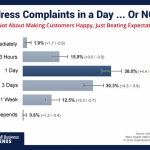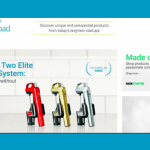What has the biggest effect on retail purchasing behavior? According to theMindtree Shopper Survey 2016, it’s salespeople.
Shoppers who interact with a sales associate are 43 percent more likely to buy, the study reports. What’s more, their transactions are an average of 81 percent larger. Last, but not least, they’re more likely to become repeat customers. Doing one simple thing — having your salespeople interact more with customers — will do wonders to boost your retail sales.
But four out of 10 shoppers can’t even find a salesperson when they want one — one big reason why customers switch to your competition. When asked why they leave a store and buy from a competitor, 46 percent say it’s because they couldn’t find the brand/product they were looking for; 34 percent say they weren’t sure which product to buy; and 39 percent say they didn’t get the assistance they needed or, if they did, the information provided wasn’t helpful.
How can you improve your sales peoples’ interactions with customers and increase your average sales? Here are some retail sales tips.
Retail Sales Tips for Salespeople
- Have salespeople make contact with customers when they enter the store.Yes, many customers act like they hate this — but if they have a question later, they’re likely to search for the salesperson who “annoyed” them when they first walked in. In fact, the study reports that more than 70 percent of customers say they are interested in interacting with salespeople in a retail store.
- Train salespeople to recognize the signs that a shopper may be looking for help. Salespeople typically rely on visual cues, such as shoppers looking lost or confused, looking around the store with purpose or waving a hand. However, this means shoppers who are out of sight of the salesperson may never get assistance. Try to minimize “blind spots” in your store, and have salespeople walk around the floor consistently so customers don’t get ignored.
- Aim to assist customers quickly. If shoppers wait more than a reasonable time without getting assistance, they will leave your store, no matter how much they want the product. Make sure your salespeople know that helping customers is a priority over administrative tasks such as restocking merchandise or filling out forms. Speed things up by training salespeople to look out for each other — for instance, if a salesperson is helping one customer while another waits nearby, other salespeople should be aware and jump in to help.
- Acknowledge customers even if you can’t help them immediately. If a salesperson is busy with one customer while another looks like she needs help, the salesperson should acknowledge the second customer and say something like, “I’ll be right with you; thank you for your patience.” Customers will be more apt to wait longer if they know they’ve got a salesperson’s attention.
- Provide ongoing training about new products, brands, models and features of what you sell. The study reports salespeople are the second-largest source of product information for customers (after websites/online reviews), so make sure your staff is knowledgeable when customers turn to them. Salespeople are especially important as a source of information about sporting goods, consumer electronics, and home decor/furnishings, the study reports. If you sell bigger-ticket and more complex items like these, your salespeople may require some in-depth training.
- Encourage salespeople to “upsell” by making recommendations for additional products. Having detailed knowledge of your stores’ products will help them make good suggestions about complementary, related or substitute products. About 20 percent of customers in the survey make a decision about which brands and models of products to buy after talking to a salesperson.
[“source-smallbiztrends”]




